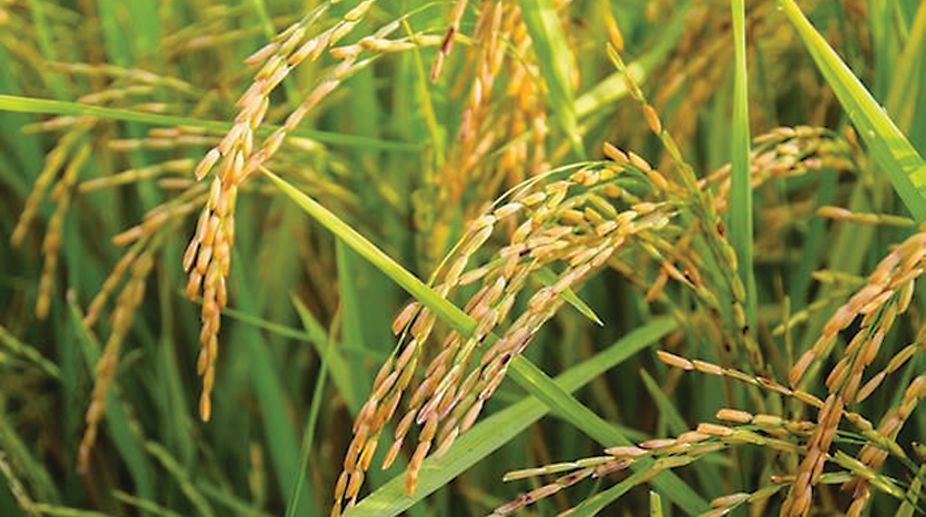Malaysia to procure 5,00,000 metric tonnes of white rice from India
Malaysia is set to submit a request to India to procure an additional 5,00,000 metric tonnes of white rice, the country’s agriculture minister said.

Representational Image.
Rice is by far the most important crop and the most important food of India. At a time when there are increasing concerns about food security of farmers it is of course of the greatest importance to increase rice yields significantly while also keeping down costs of cultivation.
In this situation, ‘A silent rice revolution – a specific plan of action for increase in productivity of rice’, formulated by Dr. R. H. Richharia, an eminent rice scientist, appears as a ray of hope. This plan of action was formulated by Dr. Richharia at the request of the Prime Minister’s office in 1983-84. However, following the assassination of Mrs. Indira Gandhi in 1984 somehow the plan got neglected.
Dr. Richharia, who lived and worked independently in Bhopal at that time, suffered great deterioration of health following the Carbide gas leak and could not follow up the matter. However, when this writer met him well before his death he still had hopes that one day this document would prove helpful for rice farmers and farming. In any case this will always remain an invaluable document and there should be wider dissemination of its contents, especially with climate change a reality.
Advertisement
Although this plan was prepared in the Indian context, it can also help other countries, particularly in Asia, where rice is a leading crop and conditions such as richness of diverse indigenous varieties are similar to those of India.
An idea about the stature of Dr. Richharia can be obtained from the fact that even though the government victimized him while he was holding the top rice scientist’s job in the country, his learning was considered so important that the government thrice recalled him from retirement to seek his advice and give him important responsibilities. He was for several years the Director of Central Rice Research Institute, Cuttack (from where he retired in 1967. He was recalled to head a national task-force on rice breeding, then to set up a rice research institute in Raipur and finally he was contacted by the Prime Minister’s office to prepare a plan for improving rice yields.
Now we come to Dr. Richharia’s ‘specific plan for action for increase in productivity of rice’. First, he identifies the factors which retarded increase in rice productivity despite increase in investments in the form of fertilisers, pesticides, irrigation, research, extension etc. Then he gives his plan in brief. Dr. Richharia’s plan has four basic components –
(1) Rice development to be based on the rich diversity of indigenous rice varieties which should be saved on farmers’ fields and priority should be given to this aspect;
(2) A highly decentralised extension approach;
(3) Large-scale adoption of clonal propagation technique to spread improved indigenous varieties, and
(4) Very high levels of involvement of rice farmers with special emphasis on encouraging those farmers who have special skills and interest in protection and promotion of diverse indigenous varieties.
According to Dr. Richharia’s plan, “The main constraint has been the hurried introduction of the undesirable new rice material, the HYVs (dwarfs) on which we based our strategy, forgetting at the same time unexpected drought situations, under which the HYVs lowered the yields. In addition, under heavy fertilisation and irrigation the HYVs proved to be susceptible to diseases and pests which cannot be controlled easily thus again pointing towards reduction of yield. Further, unlike wheat and sugarcane, the concept of ‘wider adaptability’ in rice has a limited scope for application (not exceeding 10 per cent of the rice area). This has naturally led to local preferences of different types of rice and socio-economic adjustments, developed in course of time.” So, Dr, Richharia concludes, when the base is itself weak (meaning the new rice material), a mansion built on it must collapse.
He wrote: “The most immediate and major cause can be attributed to frequent replacements of the adapted rice varieties in a locality, partly or fully. This is because the agro-ecological balance has been disturbed in the environment in respect of the existing germplasm which had been built up in course of time for centuries by the natural process of empirical breeding and selection establishing ecological balance in different environments, what in modern times can be interpreted as ‘ecological breeding.”
Fortunately, indigenous high-yielding varieties adapted to local environment are available in the country. In a survey carried out in Madhya Pradesh between 1971-74, eight per cent of the indigenous rice types were observed to fall under the category of high yielding types, fixing the minimum limit of 3705 kg/Ha. In view of this there is a need to redefine ‘HYVs’ which hitherto have been officially identified only with the exotic dwarf fertilizer-responsive varieties.
To be Concluded.
The writer is a freelance journalist who has been involved with several social
movements and initiatives.
Advertisement